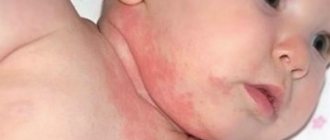How to treat stomatitis in adults: effective drugs and medications
Stomatitis is a disease of the oral cavity, which is an inflammatory process that is localized on the tongue, gums, and inner surface of the cheeks. The manifestation of stomatitis is small wounds-ulcers. The disease is infectious in nature and requires treatment.
Treatment of stomatitis in adults lasts 4-14 days, depending on the type and extent of the disease. The healing of ulcers usually proceeds calmly, and practically no traces remain at the site of the wounds. People who have had stomatitis at least once in their lives are at risk of re-infection. The frequency of occurrence of the disease is very variable.
Some patients suffer from this disease 3-4 times a year (a typical case), while in others, after ulcers that have not yet completely healed, new ones immediately appear, which makes it possible to position stomatitis as a chronic disease.
The mechanism of development of stomatitis and causes of occurrence
The mechanism of stomatitis has not yet been fully identified, but most likely it is due to the reaction of the immune system to irritants. It is believed that stomatitis occurs in cases where, for reasons that are not yet clear, the human immune system reacts to the appearance of molecules that it cannot recognize.
The appearance of such molecules provokes an attack by the lymphocytes of the immune system (a type of white blood cell), in much the same way that the human immune system reacts, for example, to an organ transplant. The “attack” of lymphocytes on these unidentified molecules leads to the appearance of ulcerative formations in the mouth, which are called “stomatitis”.
The cause of its occurrence is also considered to be local factors: poor oral hygiene. Diseases of the gastrointestinal tract, such as gastritis, duodenitis, colitis, as well as helminthic infestation, can cause catarrhal stomatitis. With this disease, the oral mucosa becomes swollen, painful, hyperemic, and may be covered with a white or yellow coating. Hypersalivation (increased salivation) is noted. Bleeding gums and bad breath may occur.
Stomatitis itself is not contagious. With herpes, stomatitis can occur as a consequence, but this is already one of the options for a person’s reaction to the herpes simplex virus.
Infectious stomatitis
To the most common information. diseases in which the oral mucosa is involved in the process include viral infections - lichen simplex, causing acute herpetic S., herpes zoster (see Herpes), influenza (see) and influenza-like diseases (for example, vesicular S.) , infectious mononucleosis (see Infectious mononucleosis), measles (see), foot and mouth disease (see), etc.; Vincent's ulcerative necrotizing stomatitis; bacterial infections - hyoid diseases, diphtheria (see), tuberculosis (see), leprosy (see); mycoses, for example, actinomycosis (see), candidiasis (see); sexually transmitted diseases, for example, gonorrhea (see), syphilis (see). If the lesion of the oral mucosa dominates in the wedge, the picture inf. illness, special treatment is required.
Acute herpetic stomatitis occurs mainly in children. Its occurrence is considered as a manifestation of primary infection of the oral cavity with the herpes simplex virus. There are mild, moderate and severe forms. The last two are accompanied by a pronounced disturbance in the patient’s condition, an increase in body temperature to 38-40°, acceleration of ROE to 20 mm/hour, and leukopenia. The mucous membrane of the mouth is swollen, hyperemic, with a large number of small vesicles, quickly turning into erosions covered with plaque (tsvetn. Fig. 14). Erosion is localized mainly on the mucous membrane of the palate, tongue, cheeks, lips, and in transitional folds. Diffuse gum disease is characterized by acute catarrhal gingivitis. Other mucous membranes may also be affected, primarily yellowish-kish. tract.
Differential diagnosis is carried out with other viral diseases (vesicular S., foot and mouth disease, etc.) using virusol. research methods (virus isolation, increase in titer of specific antibodies). Acute herpetic S. is also differentiated from allergic S.
When treating to strengthen the body's defenses, prodigiosan and lysozyme are administered intramuscularly; the oral cavity is treated with antiseptic solutions, proteolytic enzymes, and UV therapy is prescribed.
The prognosis is favorable. Prevention consists of carrying out anti-epidemic measures (isolation of sick people, monitoring the staff of children's institutions in order to identify patients with relapses of herpetic S.).
Vesicular stomatitis is caused by a virus from the family. Rhabdoviridae, which is transmitted to humans from domestic animals sick with this acute infection. illness. Infectious agents are transmitted through nutritional means, and in laboratory conditions - aerogenically.
In humans, vesicular S. occurs in the form of a flu-like infection and is accompanied by the appearance of vesicles on the oral mucosa. The incubation period is 1-5 days. Against the background of a sudden rise in temperature, symptoms of general intoxication develop (pain in joints, muscles, neuralgia, headache). After 2-3 days, vesicular rashes appear on the mucous membrane of the mouth and facial skin (cheeks, wings of the nose, upper lip), which persist for 10-12 days. At the same time, regional lymphadenitis develops.
Lab. Diagnosis is carried out by isolating the virus from nasopharyngeal swabs and the contents of vesicles. To make a retrospective diagnosis, serological methods are used. Differential diagnosis is carried out with foot and mouth disease (see), herpetic, aphthous S., as well as stomatitis that develops as a result of taking medications.
Treatment is symptomatic. Prevention of vesicular stomatitis consists of observing hygienic rules applied to prevent intestinal infections.
The prognosis is usually favorable.
Vincent's ulcerative-necrotic stomatitis (ulcerative stomatitis, ulcerative-membranous stomatitis, fusospirochetous stomatitis, ulcerative gangrenous stomatitis, Plaut-Vincent stomatitis, trench stomatitis) causes a symbiosis of a spindle-shaped bacterium (see) and a common spirochete of the oral cavity (fusospirochetosis). The occurrence of the disease is facilitated by a decrease in the overall resistance of the body, hypovitaminosis, etc. The disease usually affects young people. At the onset of the disease, body temperature rises to 37.5-38°, soreness and bleeding of the gums are noted, increased salivation and putrid breath appear. Catarrhal manifestations on the oral mucosa turn into an ulcerative process (gangrenous stomatitis), which most often begins from the gingival margin (print. Fig. 15) and spreads to other areas of the oral mucosa. When pathogens spread to the palatine tonsils, Simanovsky-Plaut-Vincent angina occurs (see Angina).
The diagnosis is established on the basis of anamnesis, wedge, manifestations, blood picture (slight leukocytosis, shift to the left, moderate acceleration of ROE), cytol results. examination of scrapings from the surface of ulcers (an abundance of spindle-shaped bacteria, spirochetes, destroyed leukocytes, structureless masses, erythrocytes). Differential diagnosis is often carried out with damage to the oral mucosa in leukemia (see).
In treatment, local effects are crucial: careful removal of dental plaque, treatment of the oral mucosa with antiseptic solutions, as well as oral administration of multivitamins.
The prognosis with timely treatment is favorable. Prevention involves maintaining oral hygiene.
Classification
Mouth ulcers, causes and treatment are determined primarily depending on the causative agent of the disease. There is a certain classification of the disease depending on what pathogen caused the white spots to appear. What stomatitis looks like in the mouth also depends to some extent on the pathogen.
| Type of stomatitis | Description |
| Viral | A consequence of infection by the herpes simplex virus (herpes stomatitis) Epstein-Barr (herpetic stomatitis). Such pathogens provoke the appearance of vesicular rashes containing clear liquid. Later, the addition of a secondary bacterial infection is noted. Then they open up and erosions appear. Similar mouth ulcers also appear with HIV. How to treat wounds is determined by the doctor, having found out the cause of the disease. |
| Bacterial | Manifests itself due to the action of staphylococci or streptococci. With this form of the disease, a purulent rash appears (easy to see in the photo), which subsequently quickly opens. As a result, ulcers and erosions form in the mouth. |
| Fungal | As a rule, it appears after a course of antibiotics with which the patient is trying to cure other diseases. Fungal stomatitis in the mouth, the photo of which clearly demonstrates a dense white coating, appears due to the action of the Candida fungus. After removing the white plaque in the mouth, painful erosions are observed on the tonsils. |
| Erosive | It appears after illness and is characterized by the occurrence of erosions. |
| Chemical | Consequences of burns produced by acid or alkali. Later, scarring and deformation of the mucosa occurs. |
| Ray | A consequence of radiation sickness also develops after chemotherapy. The patient develops erosions in the oral cavity, and the mucous membrane thickens in certain areas. |
Also, depending on concomitant diseases, syphilitic and streptococcal stomatitis are distinguished.
Symptoms of stomatitis in adults
For any type of stomatitis, the symptoms are almost the same (see photo). In adults, the disease usually begins with slight redness. It can be single, it can be multiple. Then the area around the lesion swells and becomes painful. The next day, an ulcer with smooth edges and a red halo around it forms in this place. If there are several ulcers located nearby, they can merge with each other. The central area of the ulcer is covered with a grayish or whitish coating.
The ulcer itself is very painful, but the patient is bothered by increased salivation, bleeding gums and bad breath. The pain from stomatitis can be so severe that it makes it difficult to chew food. Ulcers predominantly appear on the inside of the lips, on the cheeks, on the tonsils, and on the soft palate. Sometimes they may appear on or under the tongue.
The disease resolves over a period of 4 days to a month. There are no traces left after it.
Allergic stomatitis
As the name implies, this type of stomatitis is caused by allergic reactions of the body. The development of the disease can be provoked by: fillings, dentures, contact and food allergens, antibiotics.
Clinical manifestations of allergic stomatitis: swelling of the mucous membranes of the pharynx, soft palate, tongue, cheeks and lips, which interferes with the process of chewing and swallowing food, and also makes breathing difficult. The oral mucosa is irritated, hemorrhage and the presence of erosive areas are noted. The tongue is coated and enlarged. Salivation is weak.
If you are allergic to a prosthesis, a burning sensation is observed at the site of the installed structure. General symptoms: insomnia, irritability, temperature rise to critical levels.
Stomatitis due to intoxication with salts of heavy metals
With mild intoxication with salts of heavy metals (lead, bismuth, mercury), catarrhal S. usually occurs with areas of pigmentation of the mucous membrane (primarily the gingival margin). In severe cases, ulcerations develop, characterized by a persistent course. In addition to pain in the oral cavity, impaired salivation and a sensation of metallic taste, general weakness, apathy, indigestion, etc. are noted. Antidotes, formed diuresis, etc. are used in treatment (see Bismuth, Mercury, Lead).
Aphthous stomatitis
Aphthous stomatitis - symptoms primarily consist of the appearance of aphthous (erosions) of a round or oval shape, 5-10 mm in size, on the oral mucosa. Usually only one aphthae is formed, less often - two or three. The aphthae are surrounded by a bright red rim of inflamed mucosa, and themselves are covered with a whitish-gray fibrinous coating. Canker sores are usually very painful when touched, which can make eating difficult. The duration of clinical manifestations is about 8-10 days.
The chronic course of the disease in adults with frequent relapses indicates the presence of gastrointestinal or liver diseases. Manifested by the following symptoms: multiple lesions of the lips, cheeks, tongue; painful sensations that interfere with eating; increase in body temperature to 38. Treatment of stomatitis at home includes a set of measures related to symptomatic signs and strengthening the immune system.
Additional recommendations –
As soon as you notice the appearance of ulcers due to aphthous stomatitis, immediately start taking an antihistamine (anti-allergy) drug, plus eliminate from your diet all the foods and drinks that we described above. Immediately begin local therapy, which includes an antiseptic rinse, anti-inflammatory gel + bismuth subsalicylate-based product to protect the surface of the ulcers from irritants. See if your toothpaste contains sodium lauryl sulfate, and if so, then you should buy toothpaste without this component.
If brushing your teeth causes pain, then buy a soft toothbrush (they are usually used for inflammation and bleeding gums). For adults and children with constantly recurring outbreaks of aphthous stomatitis, there is an excellent preventive remedy - toothpastes with licorice extract and a whole complex of lactic enzymes. These components increase the protective factors of the oral mucosa, preventing the development of new cases of aphthous stomatitis. The Splat company has such toothpastes.
Additional laboratory tests - with frequent, recurring outbreaks, a complete blood count should be performed to rule out hematological diseases. It is important to check blood plasma immunoglobulins and the number of lymphocytes, and take a test for HIV infection. To rule out autoimmune diseases, the patient is usually referred for the following tests:
- erythrocyte sedimentation rate,
- antinuclear antibodies and antineutrophil cytoplasmic antibodies,
- IgA-antiendomysial antibodies,
- antibodies to tissue transglutaminase.
If ulcerative lesions heal very poorly, take a long time and practically do not respond to local treatment, it is necessary to refer the patient for a biopsy to exclude granulomatous conditions such as orofacial granulomatosis, tuberculosis or malignant tumors.
Very important -
If your child has stomatitis, it is very important to correctly determine its shape. Usually this is either an aphthous or herpetic form of stomatitis, and the most important thing is that they are treated completely differently. If your child develops stomatitis, you should not call the pediatrician. These specialists usually don’t even know that there are several forms of stomatitis, and they still either treat them with brown, blue and metrogil, or prescribe a whole bunch of drugs with opposite effects - as if for everything at once.
It makes sense to contact a pediatrician only if the child’s general condition is serious (high temperature, etc.), but such symptoms are characteristic not of aphthous stomatitis, but of herpetic stomatitis. Therefore, it is optimal to contact a pediatric dentist, and you can always arrange a home call at the reception desk of a pediatric dental clinic. We hope that our review: Aphthous stomatitis treatment in adults and children was useful to you!
Sources:
1. Dental education of the author of the article, 2. National Library of Medicine (USA), 3. Textbook “Pediatric Dentistry” (Kolesov A.A.).4. “Pediatric therapeutic dentistry. National leadership" (Leontyev V.K.). 5. “Clinical recommendations (treatment protocol) for chronic recurrent aphthous stomatitis” (Volkov E.A., Butova V.G.).
Candidal stomatitis
The causative agent - Candida fungus - is always found in the human body on its mucous membranes. Its growth and reproduction is inhibited by lactic acid bacteria (bifido, lacto). In some conditions, the balance of microorganisms is disturbed, bifidobacteria die and Candida multiplies uncontrollably on the mucous membrane. The most common cause of candidal stomatitis (thrush in the mouth) is taking antibiotics.
In the initial stage of the disease, warning signs appear:
- dryness;
- burning in the mouth;
- swelling of the mucous membrane;
- redness of the mucous membrane;
- white or gray coating;
- thick white discharge;
- bad breath or bad breath;
- pain when chewing and talking.
White plaque in the mouth can lie on the mucous membranes completely or in spots. If the plaque is carefully removed (wipe with a cotton swab), then underneath it will be the red, inflamed oral mucosa.
How is Vincent's necrotizing ulcerative stomatitis diagnosed?
The dentist diagnoses trench mouth during an examination. He may press gently on the gums to see how easily they bleed under pressure. An x-ray may also be needed to see if the infection has spread to the bone under the gums.
Other symptoms such as fever or fatigue are noted. Blood tests may be needed to check for other undiagnosed conditions. HIV infection and other immune problems can contribute to the growth of bacteria in the mouth.
To diagnose the disease, you need to contact your dentist and do the following:
- identify gum disease;
- determine destruction of gum tissue;
- note the presence of ulcers on the gums, in which food particles can accumulate;
- take a dental x-ray and a facial x-ray
Signs of herpetic stomatitis
The incubation period does not exceed 4 days. Most often, the first manifestation of the disease occurs in childhood, after which the disease periodically recurs even after reaching adulthood. As a rule, the development of herpetic stomatitis is caused by a decrease in the body's defenses caused by a malfunction of the immune system, overwork, stress or other factors.
Characteristic formations in the form of fluid-filled bubbles form on the cheeks, palate and tongue. After bursting, single bubbles merge into painful erosions. In adulthood, the body's reaction is rarely accompanied by symptoms of severe intoxication, but in some cases muscle pain, headaches, and fever are possible (especially if the initial symptoms are ignored).
Ulcerative stomatitis
Ulcerative stomatitis is relatively mild. Signs of inflammation appear in the oral cavity: the mucous membrane turns red, becomes swollen, and a burning sensation occurs in the gum area. After a few days of such manifestations, single ulcers appear on the inside of the cheeks and on the gums, on top of which there is a white-dirty coating. In this case, patients complain of increased salivation and bad breath. Fever may occur. With ulcerative stomatitis, sharp pain is observed, which intensifies when the inflamed areas come into contact with food, teeth and tongue.
Vincent's ulcerative-necrotizing stomatitis is manifested by extensive inflammation of the oral mucosa with a rapid increase in symptoms. Within a few days, the tissues become covered with ulcers with uneven edges, on top of which there are dense films of gray-green color. There are hyperemic tissues around them, and the ulcers themselves often spread to the tongue. Inflamed lesions can merge and affect the deeper layers of the mucous membrane. If you try to remove the plaque, a red bleeding surface will appear underneath it.
Current and prospects
In accordance with the symptoms and their severity, experts distinguish acute, subacute and chronic forms of the disease, and according to the severity of the lesion - mild, moderate and severe forms.
With timely treatment of ulcerative stomatitis, the prognosis is usually favorable (weakening of the lesion within a few days, a significant reduction in the duration of the acute period, recovery within eight to twelve days). But if there is no treatment or if it is started late (advanced cases), complications are possible: damage to periodontal tissues, loosening and loss of teeth, and the disease becoming chronic.
Request a consultation
How to treat stomatitis in adults?
The basis of treatment of any form of stomatitis in adults is pain relief and inflammation relief with the help of effective drugs. First of all, oral irrigation or local anesthetic applications are used. It is especially important to clean the mouth of children before eating. To stimulate healing and fight microbial infection, herbal solutions (oak bark, linden blossom, decoction of chamomile, St. John's wort, calendula), furacillin or miramistin solution are used.
Catarrhal stomatitis, caused by a banal violation of oral hygiene, with a mild course can be treated at home on your own, and after a week the person forgets about its appearance. In this case, you should use antiseptic mouth rinses and follow a diet that excludes spicy, hard, too salty or sour, too hot or cold foods.
If stomatitis is viral in nature, antiviral ointments are used. In order to create a protective film over the ulcers, Vasiline, rosehip or sea buckthorn oil, and aloe juice are used. They help in epithelial regeneration.
For fungal stomatitis, antifungal drugs are used - Candida for local treatment, Miramistin, Hexoral.
Stomatitis in some somatic diseases
Patol. changes in the oral mucosa can occur with hypovitaminosis, endocrine diseases, diseases of the gastrointestinal tract. tract, cardiovascular system, blood, nervous system, collagen diseases. Usually they are not specific for a particular somatic disease. Often pathol. changes in the oral mucosa precede the appearance of the main wedge symptoms.
For more details, see articles devoted to individual diseases, for example. Gastritis, Diabetes mellitus, Leukemia, Colitis, Lupus erythematosus, Pernicious anemia, etc.
Stomatitis with dermatoses - see Lichen planus, Pemphigus.
Bibliography:
Barer G. M. On the reaction of the oral mucosa during radiation therapy of neoplasms of the maxillofacial area, Dentistry, No. 6, p. 17, 1962; Borovsky E.V. et al. Therapeutic dentistry, M., 1982; Borovsky E. V. and Danilevsky N. F. Atlas of diseases of the oral mucosa, M., 1981; Vinogradova T. F. et al. Some indicators of immunological reactivity in children with acute herpetic stomatitis, Dentistry, v. 52, no. 6, p. 76, 1973; Human viral diseases, ed. A. F. Bilibina, p. 307, M., 1967; Mashkilleyson A. L. Precancer of the red border of the lips and oral mucosa, M., 1970; Rybakov A. I. and Banchenko G. V. Diseases of the oral mucosa, M., 1978; Severova E. Ya. and Bokanova Zh. V. Manifestation of drug allergies in the oral cavity, Dentistry, No. 6, p. 28, 1968; Syurin V.N. and Fomina N.V. Private veterinary virology, p. 294, M., 1979; Chirva V. T. Changes in the dental system and in the oral cavity with agranulocytosis, Dentistry, No. 2, p. 21, 1968; L ehner T. Immunologic aspects of recurrent oral ulcers, Oral Surg., v. 33, p. 80, 1972; Matthews REF Classification and nomenclature of viruses, Intervirology, v. 12, p. 222, 1979; P andi DN Herpetic erythema multiforme, Brit. med. J., v. 1, p. 746, 1964; Pindborg JJ Atlas of diseases of the oral mucosa, Copenhagen, 1973; R ick 1 es NH Allergy in surface lesions of the oral mucosa, Oral Surg., v. 33, p. 744, 1972; Stanley HR Aphthous lesions, ibid., p. 407.
E. V. Borovsky; B. F. Semenov (vesicular stomatitis).
Drugs for the treatment of stomatitis
Sometimes the pain of ulcers greatly interferes with the patient’s ability to lead a normal lifestyle and eat. Therefore, the doctor may recommend the use of some effective anesthetic drugs, such as:
| Drug name | Mechanism of action |
| Anestezin | local anesthetic for superficial anesthesia, available in the form of tablets for forming powder and powdering the affected area. |
| Hexoral tabs | is available in the form of lozenges; the drug contains Chlorhexidine and Benzocaine, which have a local antimicrobial and analgesic effect |
| Lidocaine Asept | an antiseptic with a local anesthetic effect, quite often used for aphthous stomatitis and for the treatment of erosive lesions of the mucosa. |
| Lidochlor | a drug of combined action in the form of a gel, which has a local anesthetic and antiseptic effect, pain relief and antimicrobial action occurs 5 minutes after applying the gel. |
| Folk remedies | A decoction of sage, calendula, chamomile, and colanchoe juice is used for pain relief and the treatment of ulcers. |
In addition, treatment must include mouth rinses, ointments, sprays, gels, absorbable tablets, and lozenges with antimicrobial action.
Here is a list of current and effective drugs for treating stomatitis at home:
- "Actovegin" is a gel that is used for the initial treatment of ulcers.
- "Eucalyptus M" - lozenges.
- "Kameton" - spray and aerosol.
- "Cholisal" is a dental gel with a combined analgesic, anti-inflammatory and antimicrobial effect.
- “Vinilin gel”, “Lugol spray”, “Hexoral spray”, “Inhalipt spray”.
- Hexetidine (Stomatidin) is an antiseptic with weak analgesic and antimicrobial effects.
- “Evkarom”, “Ingafitol” - a collection for rinsing the mouth and inhalations, consists of eucalyptus leaves and chamomile flowers.
- “Kamistad” is a dental gel with an anesthetic and antiseptic effect; it contains chamomile and lidocaine.
Antiviral, antifungal, antihistamine drugs are used depending on the cause of stomatitis, for herpetic stomatitis in adults, treatment consists of the use of antiviral agents in ointments, tablets, for fungal origin of stomatitis (thrush) antifungal agents are used, antihistamines should also be used for allergic stomatitis , and with other types of lesions of the oral mucosa.
- Antihistamines - in tablet form “Fenistil”, “Claritin”, “Loratodin”, “Cetrin”, “Suprastin”, “Tavegil”.
- Antifungals - “Mikozon”, “Daktarin”, “Mikonazole” gel, “Levorin”, nystatin ointment.
- Antiviral - oxolinic, bonaftone ointment, interferon, tebrofen ointment, Zovirax, Acyclovir, Viru-Merz Serol.
Agents that accelerate epithelial healing:
- Rosehip and sea buckthorn oil have a healing effect.
- Karotolin is an oil solution intended for external use with an antioxidant effect, vitamin A.
- Propolis spray is an additional remedy for the treatment of stomatitis in adults, which has a beneficial effect in the presence of various skin lesions, herpes, and ulcers.
- Shostakovsky's balm, or "Vinilin" - helps cleanse wounds and accelerates tissue regeneration and epithelization, has an antiseptic and anti-inflammatory effect.
- “Solcoseryl” is a dental paste that improves tissue trophism and stimulates epithelial regeneration in cases of stomatitis.
Folk remedies
Treatment of stomatitis at home should be carried out as prescribed by a doctor, who will take into account the causes of the disease and the general condition of the body. After eliminating the cause, he will prescribe rinses, ointments, gels, and multivitamin preparations.
- Hydrogen peroxide. Rinse your mouth with 3% hydrogen peroxide diluted in the same amount of water 2-3 times a day for one to two weeks.
- Blue iodine. Dilute blue iodine in a 1:1 ratio with warm water. Rinse your mouth with a glass of water 3 times a day. Apply gauze bandages moistened with blue iodine to the affected areas for 5 minutes. Treat stomatitis with this method 3 times a day.
- Propolis tincture. After eating, rinse your mouth with hot water and then hydrogen peroxide to thoroughly clean out the sores. Some additionally dry them with warm air using a hairdryer. Then lubricate the affected areas with alcohol tincture of propolis diluted with water and dry again with warm air so that a film forms more quickly.
- Myrrh oil. As legend has it, ancient Greek warriors did not go on a campaign without a paste of myrrh resin. Thick oil prevents the spread of infection, treats various skin lesions, helps with coughs and colds, and has an anti-inflammatory and antiseptic effect for bacterial and viral lesions.
- Silver water. Used to treat stomatitis in children and adults. Rinse your mouth with warm water several times a day. To prepare silver water, place a silver item in water at room temperature for a day.
- Honey. Brew 1 tsp. green tea with a glass of boiling water in a teapot, leave for 45 minutes, strain. Melt 1 tbsp in a water bath. honey, add to green tea infusion. Rinse your mouth several times a day with warm infusion to treat stomatitis.
- Blueberry. Brew 0.5 liters of boiling water with 3-4 tablespoons. blueberries, cook for 15 minutes over low heat with the lid closed, let cool. Rinse your mouth with a decoction for stomatitis or irritation of the mucous membrane.
- Get 1 tsp. freshly squeezed onion juice, 1 tsp. Kalanchoe juice, add 3 tbsp to the juice mixture. water. Rinse your mouth several times a day.
Treatment
Bacterial causes of this disease require treatment with antibiotics, anti-inflammatory drugs and disinfectants. The most commonly prescribed medications are:
- Rinse and treat with a weak solution of hydrogen peroxide, furatsilin or potassium permanganate;
- Solutions of trypsin, pancreatin, chemotrypsin and other proteolytic enzymes to remove tissues susceptible to necrosis;
- Trichopolum, Flagyl, Metrogyl, Dioxidin or Klion for a week;
- General strengthening agents, immunomodulators, vitamin and mineral complexes to boost immunity;
- Antibiotics: ampiox, gentamicin, lincomycin, penicillin, kanamycin;
- Antihistamines to relieve possible adverse reactions from antibiotics;
- Keratoplasty: metacil, solcoseryl, retinol acetate, aloe and kalanchoe juice, sea buckthorn oil.
Your attending physician will tell you in detail at your dental appointment about how to treat ulcers on the tongue and soft tissues of the oral cavity. Proper treatment helps relieve the main symptoms within one to two days and heal the ulcers within a week.
Prevention of stomatitis
Stomatitis in adults is considered a recurrent disease, that is, it is prone to return and relapse. In order to prevent a recurrence of the disease, it is necessary to adhere to the rules of prevention:
- treat caries promptly;
- treat the gastrointestinal tract in a timely manner;
- wash your hands before eating;
- remove tartar and plaque in a timely manner;
- choose the right toothpaste and mouth rinse;
- Provide yourself and your loved ones with a healthy diet, with a balanced combination of proteins, fats, carbohydrates, vitamins, and microelements.
Stomatitis is not a terrible, but very unpleasant disease of the oral cavity. Its occurrence can be effectively prevented. And timely treatment helps to quickly relieve yourself of painful symptoms.









